
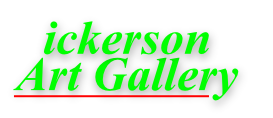
Artist interviews
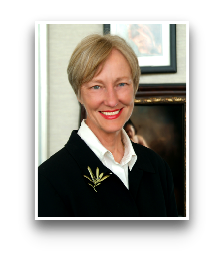
Gayle Dickerson
Vic Leo’s self-
In this month’s artist spotlight, Vic shares what drives his passion to create unique works out of steel and glass.
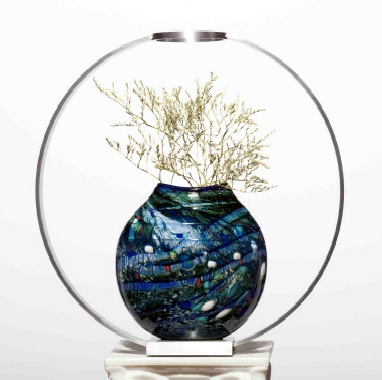
How did you get started?
I started seriously collecting glass art in the 70s. In the mid '80s I became intrigued
by the creative process that must be traveled to create non-
An Interview with Vic Leo
I spent the next decade putting serious effort into producing glasswork. Five years ago, I started thinking about sculpture. Back to school I went. This time taking mostly welding in machine shop classes. My goal was to transition from functional vessel forms to a larger message. Sculpture tells a story that is visually projected in an art form. For example, I attended an event celebrating the 150th year of the unification of Italy. On the stage was a beautiful soprano belting out an aria. The conceptual basis of my sculpture, Opera Singer, was born.
When did art enter your life?

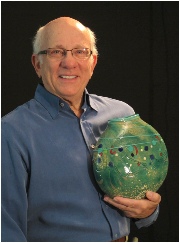
High school. Mostly shop classes – which were fully equipped and the instructors
were terrific. Shop activities included wood, metal and mechanical drawing. I've
always loved machinery. I remember completing a mechanical drawing of the complete
interior of an engine, including alternate views and cutaways. It was a great place
to learn execution skills. I also experimented with ceramics – on the wheel, not
free-
What moment in your artistic life stands out as most memorable?
Interactions with some of the greatest masters of modern glass work. By pure luck I was able to meet, interact and share ideas and materials with Harvey Littleton and Erwin Esch. All this happened at the Habitat Galleries in the 1970s.
What is the best advice you ever received?
Harvey Littleton once said: “You know a good artist by what he throws away.” This is the result of honesty and an innate understanding of materials and execution.
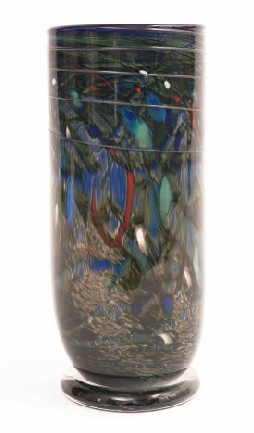
What drives you today?
The discovery process; identifying with my work; exploring and moving in certain,
and often new, directions. Most art has a conceptual basis. My vases have a functional
orientation with names to fit the outcome. The form is created to allow the artist
to 'paint' on the surface. An example is “Strata” which represents the interior of
the earth – rocks and minerals. In contrast, sculpture has greater depth, a more
purposeful and larger voice for the story the artist is conveying. In glass art the
creative process is very deliberate. Metal plates are used to form patterns, wood
mock-
Whom in your life would you like to thank and why?
My wife, Kathleen. She is my greatest supporter and is always enthusiastic. From day one to today, she has been euphoric with the journey. Kathleen bought my first blow pipe and punty.
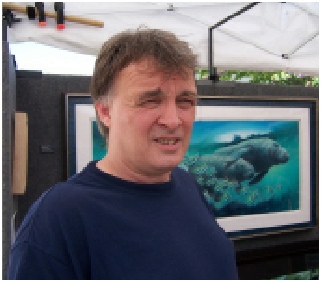
Durwood Coffey spent 32 years as an illustrator before retiring to devote full time to his painting. Coffey shares with Dickerson Art Gallery how his career provided valuable experience that informed his approach to art.
An Interview with Durwood Coffey

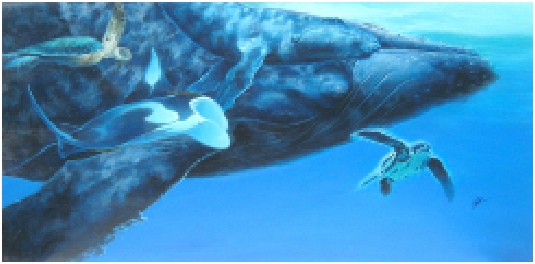

Where do ideas for your paintings come from?
Ideas can hit me anywhere. I can be driving and see it in front of me. I get home and sketch it out. Then I start drawing it out. Once I was leaving my workplace in downtown Detroit and for a brief moment I saw my “Night Hunt” painting right there in front of me. Since I’m painting wildlife, thoughts of animals are always going through my head. Now and then, the ideas surface.
If painting is your love, why spend 30+ years as an illustrator?
Illustrator/Artist–this subject is about splitting hairs. People have said Norman
Rockwell is just an illustrator. Most any painter would love to be able to paint
like him. The same with Howard Pyle and NC Wyeth, beautiful painters called illustrators.
Then there is Henri de Toulouse-
How is painting different from your work as an illustrator?
With illustration I’m working to satisfy the needs and directions of the client, to present his product in the best light to help produce sales. With paintings I’m satisfying my own needs and desires.
You talk a lot about process and composition. How is what you do different?
The “process” is all the steps I take to achieve a finished painting. My penciling, applying paints and mediums.
The “composition” is the placement of my ideas and arrangement of the visual elements in my art. This is what art is all about. I don’t paint animals just to show that I can paint an animal, but through composition I can paint a story of animals and how I see them.

Who has most influenced your work?
In the early 70s I worked for Larry Topel. He is a great artist. I’ve always been
inspired by him. I worked closely with him, doing his penciling and a lot of pre-
focused. I would be working on a job and take it to him for approval. He’d look at it and ask me, “What is this? Go back and do it right!” I learned excellent work habits from Larry.
Working for R.C. Associates in the 80s, I worked with John T. He had the most influence
on my work. He was so adamant about composition. Composition is everything, nothing
else matters. It is the heart of art! He gave me a book that has been used as the
“bible of art” throughout universities for many years. The title is ”The Art of Color
and Design” by Maitland Graves. This is not a how-
John gave me this book and I looked at it and thought, “This book is old. What useful information could I possibly learn from this book?” Boy, I was so wrong! Whatever success I have achieved I owe to John for setting me on the right track in art.
“That’s good enough” should not be in an artist’s vocabulary…but, in reality, sometimes it’s the best we can do at that moment. I always strive to do my best work. Why would anyone want to work this hard doing artwork and have the frame of mind that it may or may not turn out good?
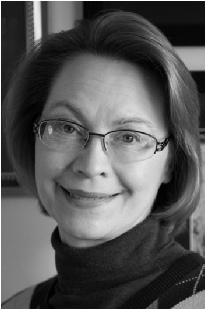
What is your art about? What is its purpose?
My photography is all about finding inspiration right here, in our everyday world.
I am always looking for the unusual in the ordinary -
How would you describe your style as a photographer?
I am a realist. Aside from basic edits, most of my work is not heavily altered. I do not limit myself to one particular subject or technique. On any given day, I can create images from intricate microcosms to intimate landscapes. I work with any kind of existing light available. I am especially fond of backlight. My challenge is to make it work.
What do you hope the viewer takes away from your art?
It is my intention for the viewer to pause and consider our little world in a whole new light. I hope to transcend the indifferent and enrich our lives one image at a time. In the end, I hope my art will inspire an uplifting and encouraging perspective of our everyday world. If I have touched just one viewer in a meaningful way, then I consider my job done.
You use the words “uplifting and encouraging.” What do you hope to achieve along these lines?
I am very interested in the healing arts. I believe that art can have a restorative effect on mental and physical health, and I would like to see more uplifting and encouraging art on the walls of all our healthcare institutions. Everybody needs art, especially those who face incredible amounts of stress day in and day out.
What is the key thing people notice about your work?
It is an honest, positive representation of life that captures one’s heart. It is not depressing.
Is there one artist who influenced the direction of your work?
From travelling and visiting some of the greatest museums in the world, I developed
a great affinity for the world’s influential artists, including the sculptors Henry
Moore and Barbara Hepworth, the fabulous impressionists of the 19th century, and
the profoundly inspiring works of Ansel Adams. However, I do not attribute my work
to any one artist. I am self-

What honors and awards have you received in your field?
I have received many awards for my work, but I am most honored to have participated in the Images of Resilience Photography Exhibitions of 2016 and 2017, a local downriver venue for bringing mental health issues to light and the pathways to healing. Gratefully, I have been truly fortunate to display more than 30 photographs with a local hospital system’s Arts for the Spirit Program, which was instrumental in launching my photography journey.

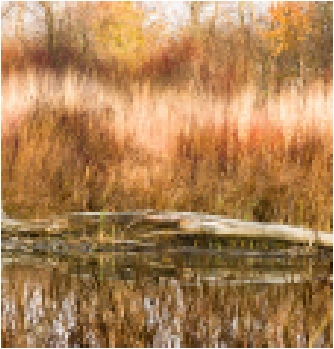
Dear Art Lover,
I am excited to bring you our first newsletter, which you are receiving because you or one of our artists expressed an interest in having you hear from us.
It has been my dream for many years to open a gallery, and the artists who have joined Dickerson Art Gallery are among the most sophisticated in their media. Together they have earned dozens of awards and have been featured in exhibitions around the world.
Mark's beautiful wood creations include bowls, jars, vases, spheres and containers which incorporate the natural shrinkage, shape changes and fiber separations in wood that some would consider flaws.
Mark earned a Bachelor of Arts degree in ceramics and sculpture from the State University of New York Fredonia campus.
Mark Krecic
July, 2016
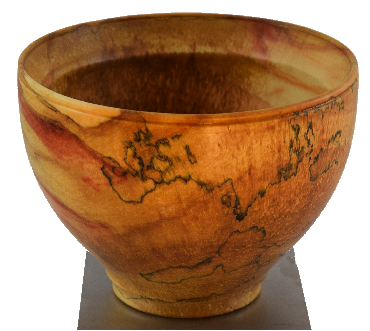
Each month, a Dickerson Art Gallery artist will be featured. You will have the opportunity to learn the fascinating stories of how they create their works and what inspires their passion.
I welcome you to browse our online gallery and find that piece you can’t live without!
Until next month.
Gayle Dickerson